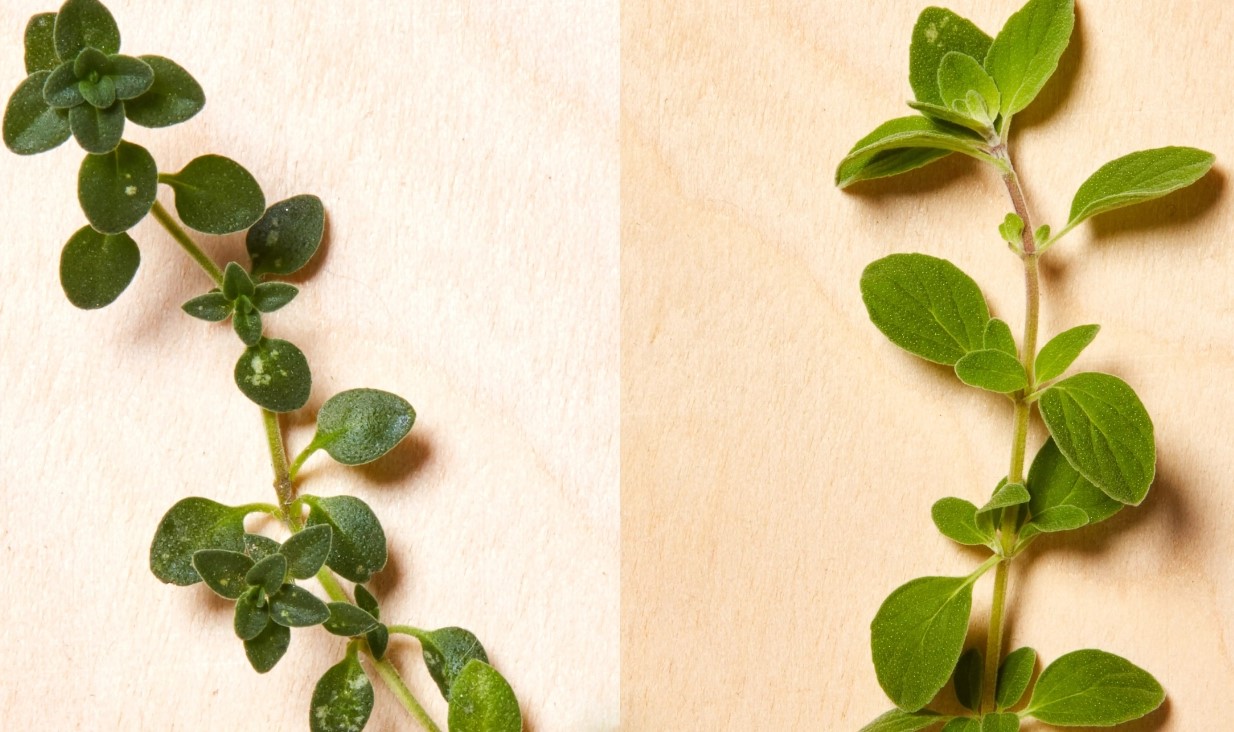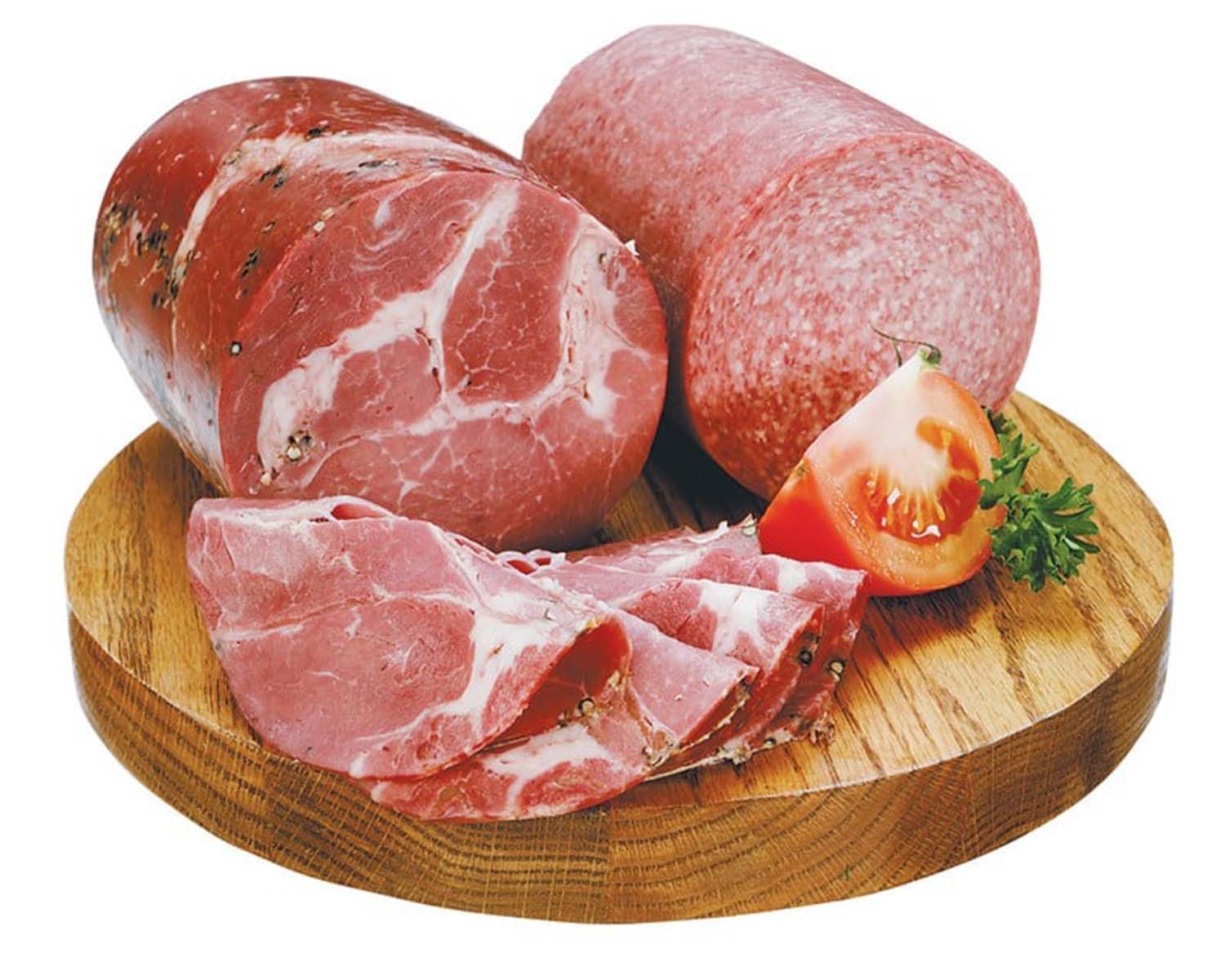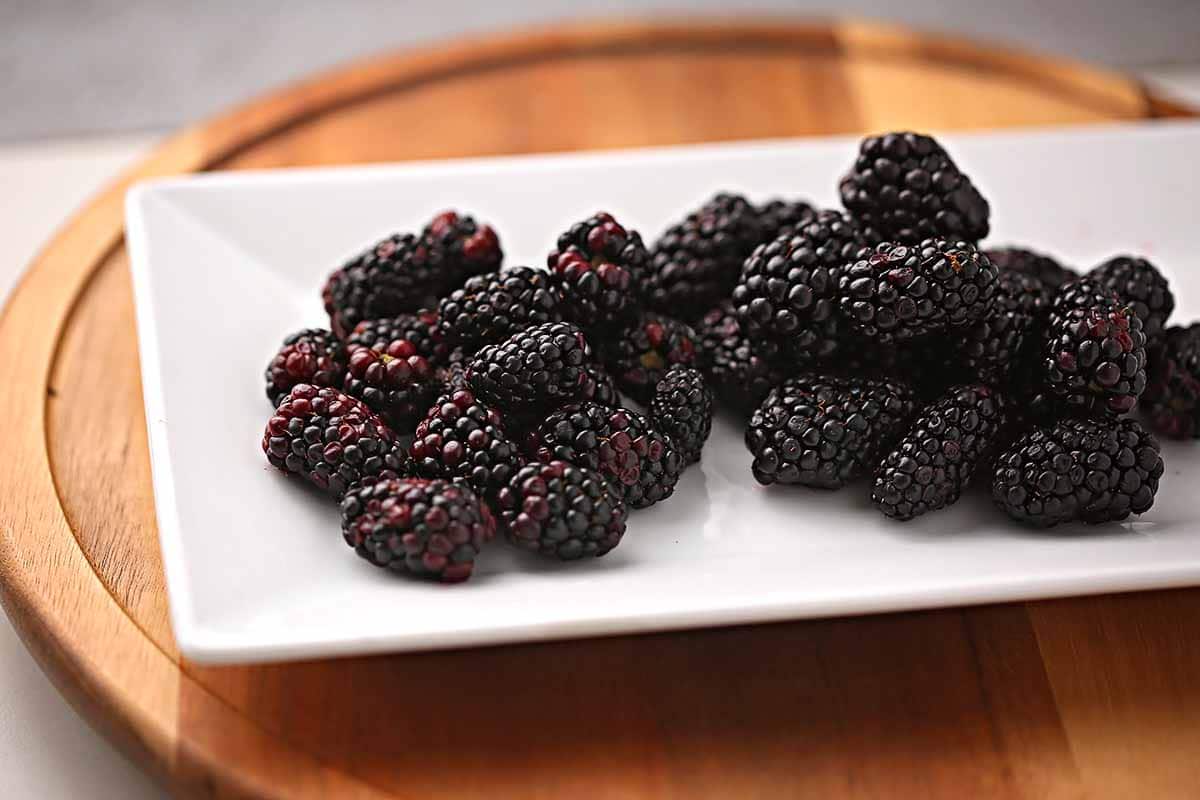Home>Food and Cooking>Unveiling The Surprising Differences Between Oregano And Thyme!


Food and Cooking
Unveiling The Surprising Differences Between Oregano And Thyme!
Modified: March 3, 2024
Discover the unique flavors and culinary uses of oregano and thyme in this comprehensive guide. Elevate your food and cooking with these essential herbs!
(Many of the links in this article redirect to a specific reviewed product. Your purchase of these products through affiliate links helps to generate commission for Noodls.com, at no extra cost. Learn more)
Table of Contents
Introduction
When it comes to adding depth and flavor to culinary creations, herbs play a pivotal role, elevating dishes from mundane to extraordinary. Among the vast array of herbs available, oregano and thyme stand out as popular choices in kitchens worldwide. While both are renowned for their aromatic and flavorful contributions, they possess distinct characteristics that set them apart. In this article, we delve into the fascinating world of oregano and thyme, unraveling their unique attributes, culinary uses, medicinal benefits, and growing conditions. By the end of this exploration, you will gain a newfound appreciation for these two remarkable herbs and a deeper understanding of how to incorporate them into your cooking endeavors. So, let's embark on this flavorful journey and uncover the surprising differences between oregano and thyme!
Background on Oregano and Thyme
Oregano and thyme are both perennial herbs that have been integral to culinary and medicinal practices for centuries. Oregano, scientifically known as Origanum vulgare, hails from the mint family, Lamiaceae, and is native to the Mediterranean region. It thrives in warm, dry climates and is celebrated for its robust flavor and aromatic qualities. Thyme, on the other hand, belongs to the genus Thymus and encompasses several species, with Thymus vulgaris being the most widely used in cooking. Originating from the Mediterranean and Western Asia, thyme is recognized for its delicate leaves and earthy fragrance.
These herbs have been cherished since ancient times, with oregano being a staple in Greek and Italian cuisines, while thyme has been a cornerstone of Mediterranean and European culinary traditions. Their rich histories and cultural significance have solidified their positions as indispensable ingredients in various global cuisines.
Oregano and thyme have also been revered for their medicinal properties. Oregano, in particular, has been valued for its antibacterial and antioxidant properties, with its essential oil being utilized in traditional medicine to alleviate respiratory conditions and digestive discomfort. Thyme, with its antiseptic and antifungal attributes, has been employed to treat respiratory ailments and as a natural remedy for coughs and sore throats.
The distinct backgrounds of these herbs have shaped their culinary and medicinal roles, with oregano lending its bold, peppery flavor to dishes such as pizzas, pasta sauces, and grilled meats, while thyme imparts a subtle, earthy essence to soups, stews, roasted vegetables, and meat-based dishes.
As we delve deeper into the physical characteristics, flavor profiles, culinary uses, medicinal benefits, and growing conditions of oregano and thyme, we will gain a comprehensive understanding of these remarkable herbs and the diverse ways in which they enrich our lives.
Physical Characteristics
Oregano and thyme, despite both being small, perennial herbs, exhibit striking differences in their physical attributes. Oregano typically grows to a height of 20-80 cm (7.9-31.5 in) and is adorned with small, ovate leaves that are fuzzy and gray-green in color. The leaves of oregano are often slightly larger and broader compared to those of thyme, giving the plant a fuller appearance. Additionally, oregano leaves exude a pungent aroma, making them easily distinguishable from other herbs.
In contrast, thyme, with its compact and bushy nature, reaches a similar height of 15-30 cm (5.9-11.8 in) but boasts smaller, slender leaves that are green-gray in color. The leaves of thyme are notably delicate and emit a gentle, earthy fragrance when crushed, adding to the herb's allure.
When it comes to flowering, both oregano and thyme produce clusters of small, delicate flowers that contribute to their ornamental appeal. Oregano blooms with tiny pink or purple flowers that form dense, rounded clusters, enhancing the visual charm of the herb. On the other hand, thyme showcases petite, pale pink or lilac flowers that grow in whorls along the stems, creating a picturesque display.
In terms of overall appearance, oregano tends to have a more robust and sprawling growth pattern, while thyme exhibits a more compact and tidy form. These physical disparities are not only visually captivating but also play a role in distinguishing the two herbs in culinary and horticultural settings.
As we immerse ourselves in the world of oregano and thyme, it becomes evident that their physical characteristics not only contribute to their aesthetic appeal but also serve as vital identifiers, guiding us in their selection, cultivation, and utilization in culinary endeavors.
Flavor Profiles
Oregano and thyme boast distinct flavor profiles that infuse dishes with unique and captivating tastes. Oregano, with its bold and assertive flavor, delivers a pungent combination of earthy, peppery, and slightly bitter notes. This herb's intensity is attributed to the high concentration of essential oils, particularly carvacrol and thymol, which contribute to its robust and aromatic essence. Oregano's flavor profile is further enriched with hints of citrus and a subtle sweetness, adding depth and complexity to a wide range of culinary creations.
In contrast, thyme offers a more delicate and nuanced flavor profile, characterized by subtle earthy undertones, floral hints, and a gentle, lingering warmth. The herb's distinctive flavor is attributed to the presence of thymol, a key component that imparts a mild, savory note with subtle floral and minty undertones. Thyme's flavor profile is often described as warm and herbaceous, with a touch of sweetness and a refreshing, lingering aftertaste.
When used in cooking, oregano's robust flavor profile shines in hearty, savory dishes such as tomato-based sauces, grilled meats, and Mediterranean-inspired fare. Its assertive nature allows it to hold its own amidst bold flavors, adding depth and character to a variety of culinary creations. On the other hand, thyme's delicate flavor profile complements a wide array of dishes, including soups, stews, roasted vegetables, and poultry-based recipes. Its subtle yet distinctive taste enhances the overall flavor profile of dishes without overpowering other ingredients, making it a versatile and indispensable herb in the culinary world.
The contrasting flavor profiles of oregano and thyme offer chefs and home cooks a diverse palette of tastes to elevate their culinary endeavors. Whether seeking a bold and peppery kick or a subtle, herbaceous infusion, these two herbs cater to a spectrum of flavor preferences, enriching dishes with their unique and captivating taste profiles.
Culinary Uses
Oregano and thyme, with their distinct flavor profiles and aromatic allure, play pivotal roles in enhancing a myriad of culinary creations. These versatile herbs are celebrated for their ability to infuse dishes with captivating tastes and aromas, elevating the overall dining experience. Let's explore the diverse culinary uses of oregano and thyme, from traditional favorites to innovative culinary applications.
Oregano:
-
Mediterranean Marvel: Oregano is a quintessential ingredient in Mediterranean cuisine, where its robust flavor shines in classic dishes such as Greek salads, pasta sauces, and marinades for grilled meats. Its peppery and slightly bitter notes add depth and complexity to traditional Greek and Italian fare, imparting an unmistakable Mediterranean flair.
-
Pizza Perfect: Oregano's aromatic essence is a staple in pizza seasoning blends, where it lends a savory, herbaceous punch to the iconic dish. Whether sprinkled over a classic Margherita pizza or incorporated into homemade pizza dough, oregano's bold flavor elevates the overall taste profile, making it a must-have herb for pizza aficionados.
-
Herbaceous Harmony: Beyond Mediterranean and Italian cuisines, oregano finds its way into an array of global dishes, including Mexican salsas, Tex-Mex fare, and Middle Eastern delicacies. Its versatile nature allows it to complement a spectrum of flavors, making it a cherished herb in diverse culinary traditions.
Thyme:
-
Savory Staple: Thyme's delicate and earthy flavor makes it a cherished addition to an array of savory dishes. From hearty stews and soups to roasted vegetables and braised meats, thyme infuses dishes with a subtle, herbaceous warmth that enhances the overall taste profile, making it an indispensable herb in traditional and contemporary cooking.
-
Poultry Perfection: Thyme's affinity for poultry dishes is undeniable, as it pairs exquisitely with roasted chicken, turkey, and game birds. Whether used in herb rubs, stuffings, or as a garnish, thyme's aromatic essence adds a delightful dimension to poultry-based recipes, earning its place as a go-to herb for culinary enthusiasts.
-
Versatile Virtuoso: Thyme's versatility extends beyond savory applications, as it harmonizes with sweet flavors in innovative ways. From infusing honey with its herbaceous notes to enhancing fruit-based desserts and cocktails, thyme's adaptability in both savory and sweet creations makes it a prized herb in modern gastronomy.
In summary, oregano and thyme stand as culinary powerhouses, enriching a vast array of dishes with their distinctive flavors and aromatic allure. Whether used in traditional recipes or innovative culinary creations, these herbs continue to captivate the palates of food enthusiasts worldwide, solidifying their status as indispensable ingredients in the culinary realm.
Medicinal Benefits
Oregano and thyme, beyond their culinary prowess, offer a treasure trove of medicinal benefits that have been revered for centuries. These remarkable herbs are rich in essential oils, antioxidants, and bioactive compounds, endowing them with potent therapeutic properties that have been harnessed in traditional medicine and holistic healing practices. Let's delve into the extensive medicinal benefits of oregano and thyme, uncovering their valuable contributions to health and well-being.
Oregano:
Oregano has long been celebrated for its potent antibacterial, antiviral, and antioxidant properties, making it a formidable ally in combating various ailments. The high concentration of carvacrol, a key component in oregano essential oil, imbues the herb with powerful antimicrobial properties, aiding in the fight against harmful bacteria and viruses. Additionally, oregano contains rosmarinic acid, a potent antioxidant that neutralizes free radicals, reducing oxidative stress and bolstering the body's defense mechanisms.
In traditional medicine, oregano has been utilized to alleviate respiratory conditions such as coughs, bronchitis, and sinus congestion. Its expectorant and decongestant properties help to clear respiratory passages and ease breathing, offering relief from respiratory discomfort. Furthermore, oregano's anti-inflammatory attributes have been harnessed to alleviate digestive distress and soothe gastrointestinal issues, providing a natural remedy for indigestion and bloating.
Thyme:
Thyme, renowned for its antiseptic, antifungal, and expectorant properties, has been a staple in natural medicine for addressing a spectrum of health concerns. The presence of thymol, a potent antiseptic compound, empowers thyme with the ability to combat bacteria and fungi, making it a valuable asset in promoting oral health and treating fungal infections. Additionally, thyme's expectorant properties aid in loosening phlegm and relieving coughs, offering respiratory support and comfort.
In holistic healing practices, thyme has been revered for its immune-boosting properties, fortifying the body's natural defenses and promoting overall well-being. Its antioxidant-rich nature, attributed to compounds such as flavonoids and phenolic acids, contributes to cellular protection and supports cardiovascular health. Furthermore, thyme's anti-inflammatory attributes have been harnessed to alleviate muscle and joint discomfort, providing natural relief for minor aches and pains.
In summary, oregano and thyme stand as veritable powerhouses of wellness, offering a myriad of medicinal benefits that span respiratory support, digestive comfort, immune fortification, and overall health maintenance. These herbs, steeped in ancient traditions and modern scientific validation, continue to be cherished for their holistic healing properties, enriching lives with their natural therapeutic contributions.
Growing Conditions
Oregano and thyme, revered for their culinary and medicinal virtues, thrive in specific growing conditions that cater to their unique needs. Understanding the optimal environments for cultivating these herbs is essential for nurturing healthy, vibrant plants that yield an abundance of aromatic leaves and flowers. Let's explore the distinct growing conditions required for oregano and thyme, shedding light on the key factors that contribute to their flourishing growth.
Oregano:
Oregano thrives in warm, sunny climates and well-drained soil, reflecting its Mediterranean origins. When cultivating oregano, it is essential to provide a location with full sunlight, as the herb flourishes in bright, direct light that stimulates robust growth and enhances the concentration of essential oils in its leaves. Additionally, oregano favors soil with good drainage, as excessive moisture can lead to root rot and compromise the plant's vitality. A balanced, loamy soil with a slightly alkaline pH level is ideal for cultivating oregano, promoting healthy root development and overall plant vigor.
In terms of temperature, oregano is best suited to moderate to warm climates, with an optimal range of 70-80°F (21-27°C) during the growing season. While it can withstand some degree of drought, regular watering is essential to maintain soil moisture, particularly during dry spells. Oregano's resilience to heat and drought makes it well-suited for xeriscaping and container gardening, offering flexibility in cultivation methods.
Thyme:
Thyme, similar to oregano, thrives in sunny locations and well-drained soil, emphasizing its preference for arid, Mediterranean-like conditions. When selecting a site for cultivating thyme, it is crucial to choose a spot that receives ample sunlight, as the herb flourishes in bright, direct light that encourages robust foliage and essential oil production. Furthermore, thyme benefits from soil with excellent drainage, as waterlogged conditions can lead to root rot and hinder the plant's growth. A sandy or loamy soil with a slightly alkaline to neutral pH level provides an optimal foundation for cultivating thyme, promoting healthy root establishment and overall plant vitality.
In terms of temperature, thyme thrives in warm to hot climates, with an ideal range of 70-85°F (21-29°C) during the growing season. While thyme exhibits some drought tolerance, regular watering is essential to sustain soil moisture, particularly in periods of prolonged dryness. Thyme's adaptability to arid conditions makes it well-suited for rock gardens, herbaceous borders, and container cultivation, offering versatility in landscaping and gardening applications.
In summary, providing the appropriate growing conditions, including ample sunlight, well-drained soil, and suitable temperatures, is crucial for cultivating thriving oregano and thyme plants. By understanding and catering to the unique environmental preferences of these herbs, gardeners and enthusiasts can foster healthy, prolific growth, ensuring a bountiful supply of aromatic leaves and flowers for culinary and medicinal pursuits.
Conclusion
In conclusion, the captivating journey through the realms of oregano and thyme has unveiled a tapestry of intriguing differences and remarkable similarities. These perennial herbs, steeped in rich culinary and medicinal legacies, stand as testaments to the enduring allure of natural flavors and holistic wellness. From their distinct physical characteristics to their diverse flavor profiles, culinary uses, medicinal benefits, and unique growing conditions, oregano and thyme have emerged as indispensable treasures in the world of gastronomy and natural healing.
The physical attributes of oregano and thyme, from the fuzzy, gray-green leaves of oregano to the delicate, slender foliage of thyme, offer a visual symphony that mirrors their individuality. Their flavor profiles, with oregano's bold, peppery essence and thyme's subtle, herbaceous warmth, present a harmonious dichotomy that enriches a myriad of culinary creations. Whether infusing Mediterranean marvels with the robust taste of oregano or enhancing savory staples with the delicate allure of thyme, these herbs continue to captivate the palates of food enthusiasts worldwide.
Beyond their culinary prowess, oregano and thyme offer a treasure trove of medicinal benefits, from oregano's potent antibacterial and antioxidant properties to thyme's immune-boosting and anti-inflammatory attributes. These herbs, celebrated for their holistic healing properties, stand as veritable powerhouses of wellness, offering natural remedies for respiratory support, digestive comfort, immune fortification, and overall health maintenance.
Understanding the optimal growing conditions for oregano and thyme is essential for nurturing healthy, vibrant plants that yield an abundance of aromatic leaves and flowers. From the preference for warm, sunny climates to the need for well-drained soil and suitable temperatures, these herbs thrive in environments that reflect their Mediterranean origins, offering a glimpse into the regions that have shaped their cultural and botanical identities.
As we conclude this flavorful exploration, the surprising differences and delightful nuances of oregano and thyme have illuminated the intricate tapestry of flavors, aromas, and natural benefits that these herbs bring to the table. Whether adorning a classic pizza with the bold essence of oregano or infusing a comforting stew with the gentle warmth of thyme, these herbs continue to inspire culinary creativity and nurture holistic well-being, enriching our lives with their timeless presence and enduring contributions.












